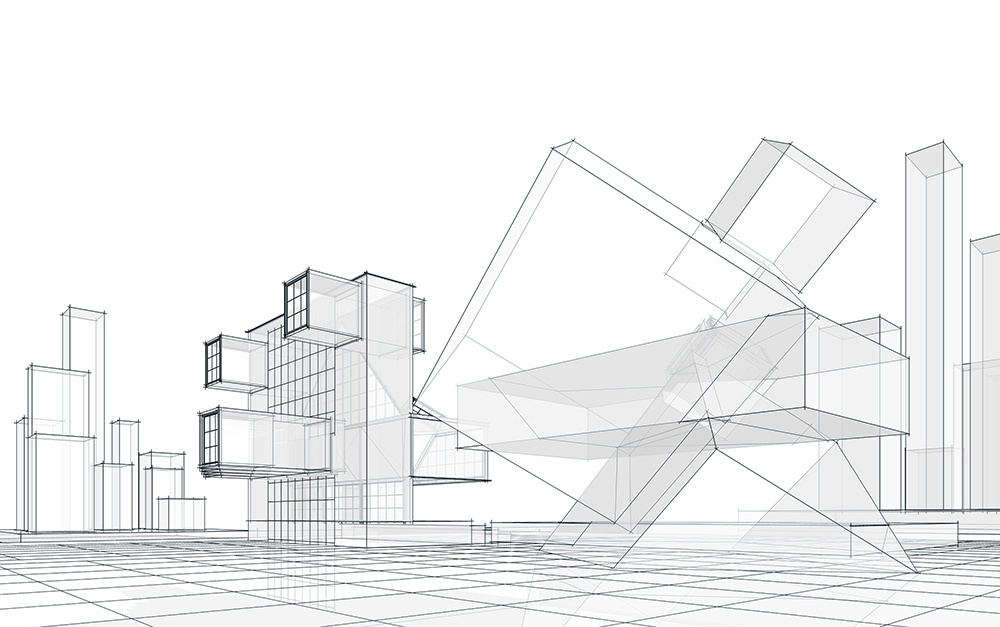The figures are staggering enough: from the 1980s to the last decade, weather-related damage has risen from losses of about $50 billion annually to nearly $200 billion every year. And there’s more to come, with the CSIRO warning that the cost of replacing buildings exposed to extreme weather events could exceed $1 trillion in Australia alone by the end of the century.
Overall, it’s more cost-effective to protect new buildings from these risks through sustainable architecture and climate change adaptation than it is to retrospectively repair existing properties. With the rise of extreme weather events, temperatures and sea levels, it’s important for architects to design progressive, sustainable buildings that can not only survive these extreme weather conditions and changing climates within the lifetime of a building, but thrive.
With the help of research published by the Australian Institute of Architects, we’ve rounded up ways to adapt commercial building and modern house design to withstand and safeguard against various extreme weather events.
1. Designing for heavy rainfall and floods
To design a flood proof house or commercial building, considering the durability of building materials is key to ensure resistance to flooding and seepage, particularly in coastal or riverside areas prone to storm surges.
Water resistant materials
Plasterboards, plywoods, carpets, vinyl, ceramic tiles and fibreglass are all non-water resistant materials. Instead, use water-resistant materials such as:
- closed cell foam for insulation
- concrete or clay tile floors, or durable or treated timber floorboards for flooring
- fibre-cement, concrete or PVC brick for walls
Flood proof structure
Another important consideration for sustainable building design lies in the structure itself. Consider multi-storey construction, ideally using the lower levels for non-living areas. Exceeding minimum floor levels can also help avoid premature flooding. Ensure that in the event of a flood, water can easily escape through drainage cavities in walls once the flooding has subsided, particularly for underground and subfloor areas, foundations and cellars. Backflow preventers for plumbing are also a must.
Roofing & external surfaces
Roofing is a key risk for weather impact. Ensure roofs are designed to cope with high intensity rainfall, without increasing their complexity (which could worsen the risk of impact in the event of another extreme weather event, bushfires, should embers become lodged). Ideally you want the roof design to be simple with minimal exposure to embers and intense rainfall.
Storms and hailstorms can also inflict real damage to roofs, guttering and windows. All of these features should be able to withstand a once-in-100-year rainfall events. Ensure all aspects of your design are solid, including detailing of:
- roof edges
- open decks and balconies
- walls and joinery
- retaining walls
- wall-proof junctions
Flood resistant gardens
In terms of exteriors, gardens can act as a buffer or ‘sponge’ against excess rainfall. Water-sensitive ‘rain gardens’ help intercept stormwater, improve drainage and safely redirect water, using deck areas, the installation of a ditch or soakaway drain at the lowest point of the yard, and plants in raised beds.
2. Designing for bushfires
Building in bushfire prone areas comes with another set of challenges and associated mitigation measures, and research is still underway in terms of the most cost-effective options for designing homes that can withstand this all too real threat.
Essential features
Shutters and sprinkler systems are a must have for buildings in high-risk zones for bushfires. Determine the bushfire risk of the area you are designing for with this tool.
Fire resistant materials
Using materials that are fire resistant in order to minimise the risk of burning embers being caught in high-risk zones such as the roof is a crucial first step. You also need to ensure that decking and verandas are non-combustible.
3. Designing for heatwaves
Rising temperatures due to climate change pose a risk to the external surfaces of a building as well as its interior thermal performance, creating a stronger need for cooling indoors.
Passive design techniques
To achieve more efficient indoor climate control, without worsening carbon emissions through overuse of air conditioning, incorporate passive design techniques such as:
- considering the ideal orientation for a building
- taking into account wind paths
- thinking about seasonal variations to the sun’s path in the local area
- capturing natural ventilation and improving the interior airflow of the home
Heat resistant roofing & flooring
Green roof design is another option to keep buildings cool, and it also helps absorb stormwater runoff to prevent flooding. Consider adding:
- reflective glazing and roofing
- external shading
- increased insulation
- materials with high thermal mass
- whirlybirds to remove heated air from the roof cavity, where it can get trapped
Protective building materials such as mechanical expansion joints can also help absorb the natural thermal contraction and expansion of building materials that occurs over time and mitigate the risk of structural deterioration and cracking in concrete.
Sustainable cooling systems
Photovoltaic, solar, biomass and wind-powered cooling technology are also worth looking at to combat rising temperatures, as are solar screening and heat-deflecting windows.
4. Designing for cyclones
Though the cyclone-prone areas of Australia’s north already have stricter building codes and standards in terms of wind loading, the need for tropical architecture to embrace cyclone proof houses and buildings will increase as severe storms and cyclones become both more intense and more frequent thanks to climate change.
Cyclone resistant materials & drainage
It goes without saying that in tropical areas buildings should be designed with the aim to minimise the wind loads, and waterproof materials should be used wherever possible.
To offset the worst consequences of a cyclone, drainage design should be particularly effective. Remember to think about:
- flashing
- vents and penetrations
- using impact-resistant materials for external cladding
Wind proof structure
In order to improve wind resistance, aim for greater rigidity and reduced flexure. To achieve this:
- use improved fixing systems in roofs and subfloors to withstand higher wind loads
- reinforce the structure’s bracing
- strengthen walls, joints and junctions
- consider fenestration (the arrangement of openings in a building), as increased thickness of glazing can help to reduce the impact of wind
More information
For peace of mind on your next project, so you can focus on creating a design that will withstand extreme weather events, download our handy checklist for designing safe, user centric architecture below. 
To find out more about Latham products, please visit www.latham-australia.com. To talk to a Latham product expert, call 1300 LATHAM (528 426) or email sales@latham-australia.com.


-1.png)
